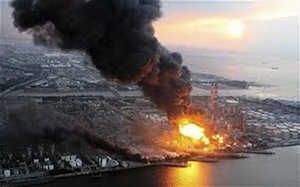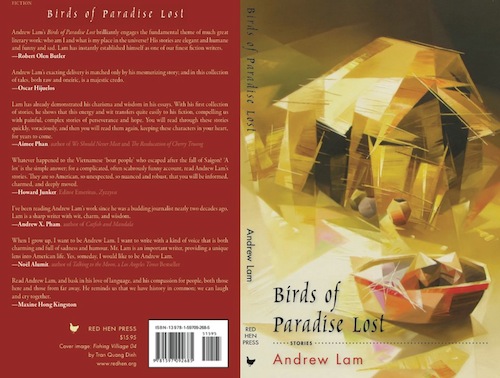In Japan's most popular cultural genres known as manga (comic books) and anime (animation films and series), there's a recurrent theme in which the country is routinely devastated. Tokyo, home to more than 30 million people, is destroyed so often in the Japanese collective imagination there's an alternative version of the ultramodern mega-metropolis: one made of shattered concrete and glass debris.
Take the popular animated film Akira, for example. "Tokyo is destroyed by an apparent nuclear explosion, leading to the start of World War III." So goes Wikipedia's note on the world-famous manga series turned anime. "Thirty-one years after Tokyo's destruction, Neo-Tokyo, a new metropolis built on an artificial island in Tokyo Bay, is gripped by political strife, anti-government terrorism and gang violence."
Or take Desert Punk: "After a global nuclear catastrophe Japan has been reduced to a desert and the surviving humans seek out a meager living in the hot sands," goes the description of the anime series.
"A devastating war fought between two major nations with ultra-magnetic weapons far greater than anything seen earlier brings about total chaos and destruction throughout the world, resulting in several earthquakes and tidal waves," begins the plot description of the anime Future Boy Conan, in which humanity is on the brink of extinction.
The examples are endless, but you see the point: Nihilistic themes dominate Japanese narratives of itself.
Now try this scenario: Japan has fallen apart. Its towns and villages devastated by such a massive earthquake that the earth's axis itself is affected and by the subsequent tsunami, its nuclear reactors exposed, sending fumes of radiation into the atmosphere. Millions live without water and electricity. Millions more live in panic and fear as the tremors continue and radiation leaks into food and water and land.
This, alas, is no scenario at all, but a reality two years ago.
So, what purposes do these apocalyptic stories serve? And how does one watch these animes, now that their visions have become prophetically superimposed on the real world?
As someone who was born into a world devastated by the Vietnam war I witnessed much destruction and suffering at a very young age. I saw dead bodies strewn about in rice fields, burned out villages, maimed survivors, homeless refugees trudging along highways, and many begging on the streets of Saigon.
As a teenager in America, however, I was enthralled by Bugs Bunny and Disney movies. In this world, evil is always conquered, and violence only serves as humor - Daffy Duck is shot so often it is expected he would be full of bullet holes, and anvils and boulders are meant to fall on Wile E Coyote. The princess marries the prince, and everyone is guaranteed a happy ending. That is, I bought into the American optimism, bought my own ticket on the little train that could.
Now, as an adult, as a seasoned journalist who has witnessed tragedy after tragedy around the world, I find myself drawn back to the Far East, and increasingly drawn to Japanese manga and anime. I watch them religiously in middle age.
Why? Because many of these stories, albeit far more complex and enticing, are similar to the folktales my Vietnamese grandmother told. On those frightful nights when the bombs fell in villages and their reverberations shook the city, Grandma's ancient stories with their ambiguous if flat-out unhappy endings were strangely soothing.
The princess died and her heart turns into a ruby, which was then carved into a teacup. The fisherman, her true love, came back and cried and his tear fell in the cup, which melted into blood.
Or she'd tell of a younger brother, who gave up his love for a beautiful woman so that his older one could marry her. The younger man went to the forest and died, turning into a betel tree. Then the older brother searched for him, died and turned into a limestone. The wife followed, and sat leaning on the tree, when she turned into a vine. When chewing betel nut together with the vine leaf and limestone, your spit will turn into the color of blood.


A few years ago in Japan, I interviewed professor Koike Kazuo, the celebrated author of the Lone Wolf and Cub manga series. It is the story of a samurai who walked the path of death while pushing a small cart in which sat his little boy. Their entire clan had been massacred.
The boy watches undaunted as his father stabs and slices their enemies. In the final episode, the boy's father is killed by their ultimate nemesis, an old man who has masterminded their clan's destruction. Undaunted, the little boy picks up his father's spear and rushes to drive it through the old man, who, recognizing the boy's samurai spirit, embraced him in death, calling him "Grandson of my heart."
I asked Kazuo sensei why such a tragic ending would be considered children's entertainment. He thought about this for a while before answering, "On the deepest level, serious mangas are about spiritual drama and love."
This struck a chord in me. Despite the age of high-tech wizardry, manga/anime continue to distill an ancient ethos of the Far East; a shared cultural matrix between Japan and East Asia, in which fatalism informs the floating world. It teaches that life is precious, and spending time serving the greater good may be the only control one has in the face of unpredictable calamity and uncontrollable and often violent cosmos. It teaches that sacrifice for others is more important than individual happiness, that to grow in strength and wisdom one must find something more precious to protect and love than one's self, that there is an inherent beauty in sadness and suffering, and that honor and loyalty and duty sometimes far outweigh romantic love.
When one lives life for the sake of others, then one will achieve his human/spiritual truth regardless of the outcome.
Indeed, if American fairy tales are in the business of protecting children from the reality of a cold and belligerent world, Japanese fairy tales told through certain genre of mangas and animes are doing quite the opposite: preparing their charges for the day in which their normal and seemingly sunny life may be abruptly thrown into complete chaos and destruction, where the rug is pulled from underneath of everyone. Thus, hidden behind those round eyed and perfect-faced cartoon characters are stories of human sufferings and survival rivaling the tragedy of Job.
No wonder these Japanese narratives are rivaling the world of Disney these days, and anime continues to enthrall children and young adults across the globe. It is in part because they don't belittle their viewers but treat them as adults to be and offer a more mature version of the world.
After the huge earthquake and devastating tsunami that destroyed Fukushima, I saw the importance of old world wisdom more clearly. My grandmother's old fairy tales, with their countless wars and natural disasters, evolved over the millennia and merge with anime as warning, as an admonitory mythos, and as a way to prepare the next generation for cataclysm and grief.
Here's another inspirational and true story with anime sensibility. The story, which has been widely distributed on the Internet and global media, is told by an immigrant in Fukushima, where the nuclear reactors continue to send radiation out of their broken roofs and walls.
A nine-year-old boy watched as the tsunami swept away his father from the balcony of his school. His sister and mother, too, were presumably swept away with their house near the beach. Yet, despite such losses, when given a bag of food, he went to the front of the food line and gave it back to the food distributors. He told the astonished man who gave him the food to nourish himself, "I see a lot more people hungrier than I am. If I put it there, then they will distribute the food equally."
The immigrant adult who told this story wrote that he wept. "Who knew a boy in the third grade could teach me a lesson on how to be a human being at a time of such great suffering?" He noted. The boy, having no superpower, having lost his family, nevertheless becomes a kind of anime hero, someone who sacrifices for the greater good and achieves human truth.
A year after the Twin Towers of the World Trade Center in New York City were destroyed by terrorist attacks I visited Ground Zero . There were many visitors and gawkers about, and next to me were a few teenagers with their charming Midwest accents, snapping photos. As they surveyed the terrible destruction before them - shattered concrete and melted steel of what was once an ivory citadel -- one of them said, with reverence in his voice, "Man, this is, like, right out of Akira!"
As the horror of Fukushima unfolded two years ago, I watched anime nightly along with news of the region's devastation, and the story lines of the Far East resonate deeply. In this post 9/11 world, where war drones fly and preemptive strikes and revolutions are the norm, where ominous storms keep gathering and growing stronger -- if not at our shores then in our collective unconsciousness - and where the earth keeps trembling, and man-made disasters become the norm, it may very well be that those apocalyptic narratives are the very medicine that could assist us all. Adults and children alike, in Japan and elsewhere, now bear witness to the churning tides.
Another versions of the essay above was written in the aftermath of the Fukushima's nuclear disaster for New America Media, where Andrew Lam is a senior editor. He is the author of "Perfume Dreams: Reflections on the Vietnamese Diaspora" (Heyday Books, 2005), which won a Pen American "Beyond the Margins" award, and "East Eats West: Writing in Two Hemispheres". His latest book, "Birds of Paradise Lost," a collection of short stories about Vietnamese immigrants struggling to rebuild their lives in the Bay Area after a painful exodus, was recently published by Red Hen Press. He was recently interviewed by Michael Krasney on Forum. To listen, click here. Lam has lectured and read his work widely at many universities.
